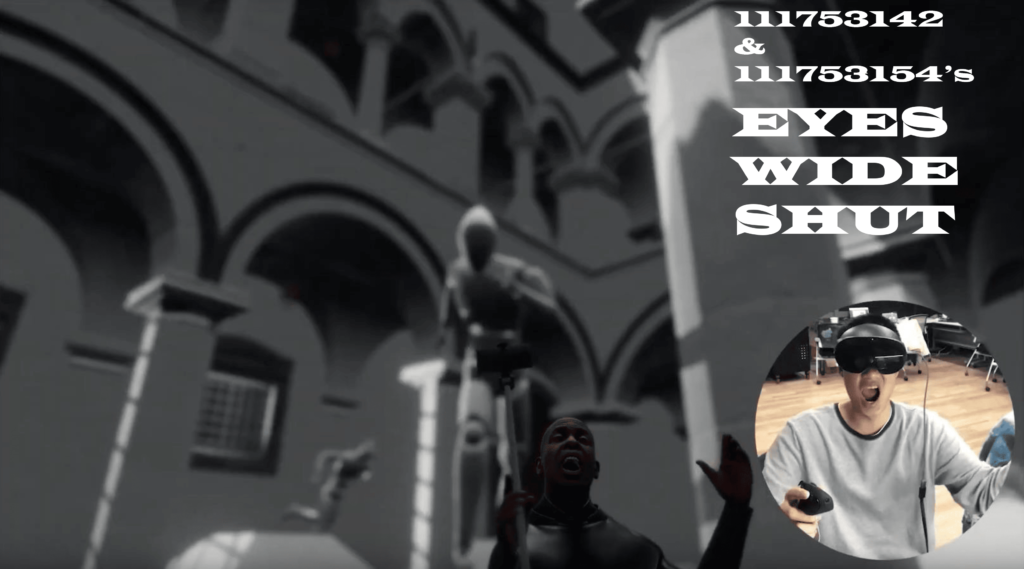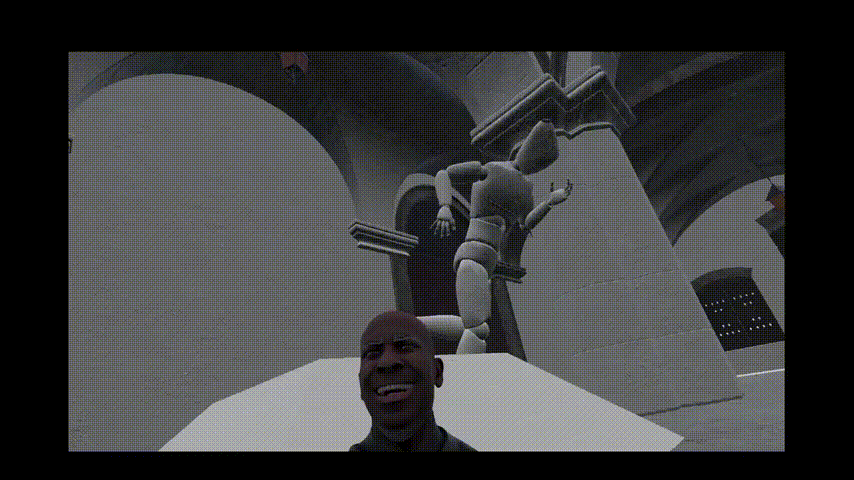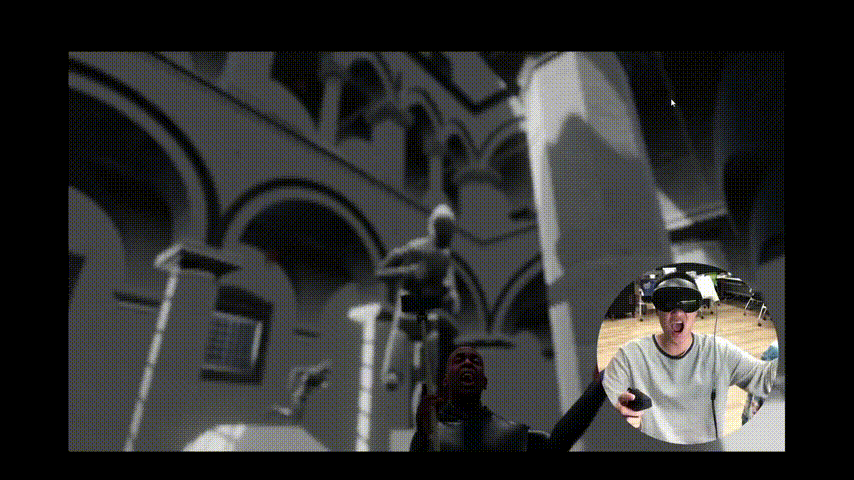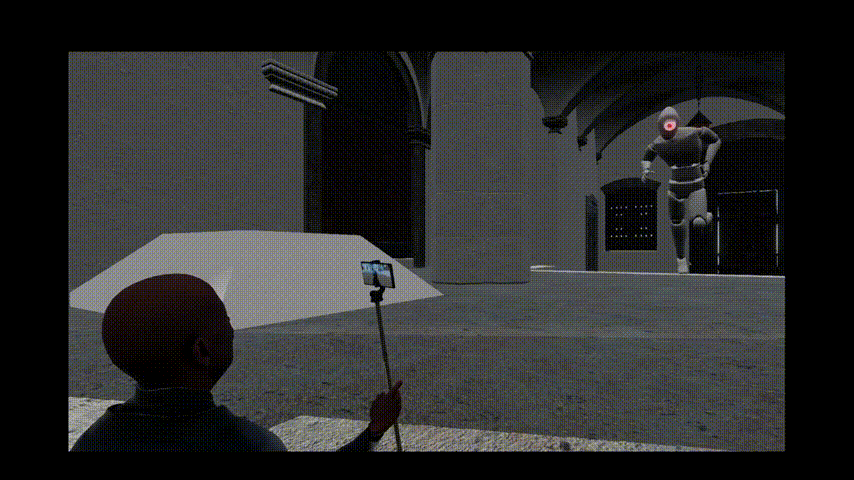Eyes Wide Shut
Eyes Wide Shut is a game I developed solo for a game development course during my master’s degree in Computer Science, it’s a game where collaboration is key, and every gaze counts.
1. Motivation and concept
As a passionate game developer, I have always been keen on creating a multiplayer VR game.
Given the technical challenges of achieving this, I came up with an innovative solution that combines VR gameplay with traditional PC screen interactions.
Instead of all players wearing VR headsets, our game features one VR player complemented by several PC players. While the VR player immerses themselves in the game environment, the PC screen provides an alternate view through strategic tweaks and scripts.
Thus, “Eyes Wide Shut” was born—a unique take on the classic “Red Light, Green Light” concept, utilizing gaze and face tracking offered by the VR headset.
2. Gameplay dynamics
In “Eyes Wide Shut,” the VR player steps into the shoes of a streamer, equipped with a selfie stick and a phone, exploring an ancient temple filled with mysterious statues.
The objective is to collect five keys, each placed in front of a statue, and escape the temple. However, once a key is collected, the corresponding statue comes to life and starts chasing the VR player.
3. If you see them, they see you
And here’s the twist:
• If the VR player stares directly at a statue and squints their eyes, it slows the statue down.
• The degree to which the statue slows down depends on how much the VR player squints the eyes.
• If the VR player closes the eyes entirely, it freezes all the statues.
This mechanic inspired the game’s name, as successfully managing these actions is crucial to surviving the temple’s dangers.
If the VR player turns their back or runs without maintaining visual contact with the statues, the statues will aggressively pursue them. This “if you see them, they see you” dynamic adds a thrilling layer of tension to the game.
4. Collaborative strategy
The PC players are not mere spectators—they play an active role in aiding the VR player. Viewing the game through the phone’s camera on the VR player’s selfie stick, PC players become the VR player’s audience and strategists.
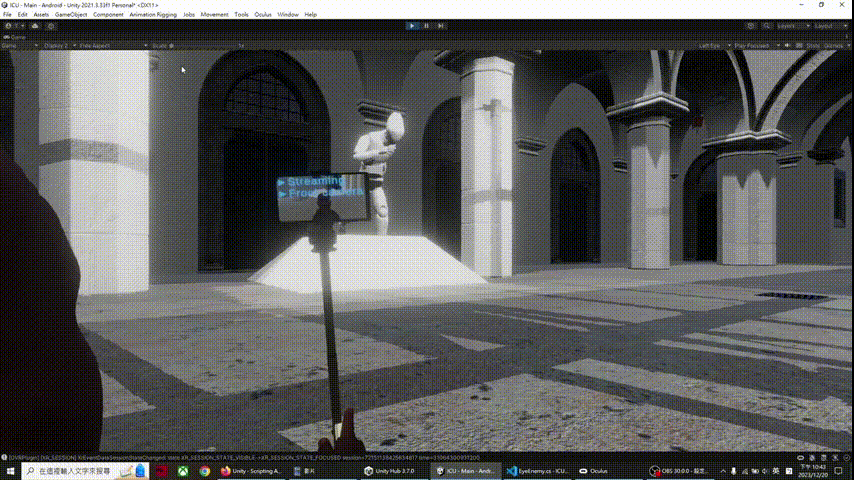
The PC players had to work together with the VR player, becoming the eye of the VR player when needed.
PC players can employ several strategies to assist the VR player:
• Back camera surveillance: When the VR player turns to run, PC players can monitor the statues using the back camera, informing the VR player when to turn and stare or close their eyes to freeze the statues.
• Path guidance: While the VR player is fixated on slowing down or freezing the statues, PC players guide them through the temple, navigating the path to collect keys and evade danger.
This cooperative gameplay transforms the experience, as PC players essentially become an extra pair of eyes for the VR player, providing crucial support and direction.
5. Achieving Multiplayer VR with One Headset
By blending VR immersion with PC screen interactions, “Eyes Wide Shut” offers a pioneering approach to multiplayer VR gaming. This design not only maintains the intensity and engagement of a VR experience but also fosters teamwork and communication among players.
Join me in exploring the ancient temple and unlocking the secrets within. Stay tuned for more updates, behind-the-scenes insights, and gameplay tips on “Eyes Wide Shut”—a game where collaboration is key, and every gaze counts.
Trailer of Eyes Wide Shut.

